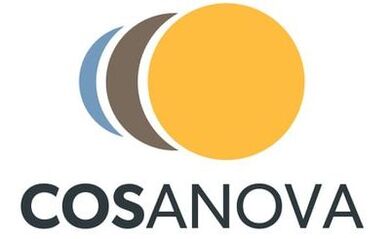Chamber Measurements
Initial studies of ecosystem carbonyl sulfide exchange used sulfur-free sweep air. Researchers noticed, however, that COS uptake could be dependent on ambient concentrations. Castro and Galloway (1991) performed an experiment comparing sulfur-free and ambient air, showing the now obvious problems with the methodology. Since then, investigations quantifying natural fluxes of COS use near-ambient COS concentrations or correct for concentration effects.
Berkelhammer, M., Asaf, D., Still, C., Montzka, S., Noone, D., Gupta, M., Provencal, R., Chen, H. and Yakir, D.: Constraining surface carbon fluxes using in situ measurements of carbonyl sulfide and carbon dioxide, Glob. Biogeochem. Cycles, 28(2), 161–179, doi:10.1002/2013GB004644, 2014.
Whelan, M. E., Min, D.-H. and Rhew, R. C.: Salt marshes as a source of atmospheric carbonyl sulfide, Atmos. Environ., 73, 131–137, doi:10.1016/j.atmosenv.2013.02.048, 2013.
Yi, Z., Wang, X., Sheng, G. and Fu, J.: Exchange of carbonyl sulfide (OCS) and dimethyl sulfide (DMS) between rice paddy fields and the atmosphere in subtropical China, Agric. Ecosyst. Environ., 123(1–3), 116–124, doi:10.1016/j.agee.2007.05.011, 2008.
Li, X., Liu, J. and Yang, J.: Variation of H2S and COS emission fluxes from Calamagrostis angustifolia Wetlands in Sanjiang Plain, Northeast China, Atmos. Environ., 40(33), 6303–6312, doi:10.1016/j.atmosenv.2006.05.054, 2006.
Geng, C. and Mu, Y.: Carbonyl sulfide and dimethyl sulfide exchange between trees and the atmosphere, Atmos. Environ., 40(7), 1373–1383, doi:10.1016/j.atmosenv.2005.10.023, 2006.
Geng, C. and Mu, Y.: Carbonyl sulfide and dimethyl sulfide exchange between lawn and the atmosphere, J. Geophys. Res. Atmospheres, 109(D12), D12302, doi:10.1029/2003JD004492, 2004.
Steinbacher, M., Bingemer, H. G. and Schmidt, U.: Measurements of the exchange of carbonyl sulfide (OCS) and carbon disulfide (CS2) between soil and atmosphere in a spruce forest in central Germany, Atmos. Environ., 38(35), 6043–6052, 2004.
Xu, X., Bingemer, H. G. and Schmidt, U.: The flux of carbonyl sulfide and carbon disulfide between the atmosphere and a spruce forest, Atmospheric Chem. Phys. Discuss., 2(1), 181–212, 2002.
DeLaune, R. D., Devai, I. and Lindau, C. W.: Flux of reduced sulfur gases along a salinity gradient in Louisiana coastal marshes, Estuar. Coast. Shelf Sci., 54(6), 1003–1011, 2002.
Kuhn, U., Ammann, C., Wolf, A., Meixner, F. X., Andreae, M. O. and Kesselmeier, J.: Carbonyl sulfide exchange on an ecosystem scale: soil represents a dominant sink for atmospheric COS, Atmos. Environ., 33(6), 995–1008, 1999.
Simmons, J. S.: Consumption of atmospheric carbonyl sulfide by coniferous boreal forest soils, J. Geophys. Res., 104(D9), 11569–11576, doi:10.1029/1999JD900149, 1999.
De Mello, W. Z. and Hines, M. E.: Application of static and dynamic enclosures for determining dimethyl sulfide and carbonyl sulfide exchange in Sphagnum peatlands: Implications for the magnitude and direction of flux, J. Geophys. Res., 99(D7), 14601–14607, 1994.
Chin, M. and Davis, D. D.: Global sources and sinks of OCS and CS2 and their distributions, Glob. Biogeochem. Cycles, 7(2), 321–337, doi:10.1029/93GB00568, 1993.
Kesselmeier, J. and Merk, L.: Exchange of carbonyl sulfide (COS) between agricultural plants and the atmosphere: Studies on the deposition of COS to peas, corn and rapeseed, Biogeochemistry, 23(1), 47–59, doi:10.1007/BF00002922, 1993.
Castro, M. S. and Galloway, J. N.: A comparison of sulfur-free and ambient air enclosure techniques for measuring the exchange of reduced sulfur gases between soils and the atmosphere, J. Geophys. Res., 96(D8), 15427–15, 1991.
Berkelhammer, M., Asaf, D., Still, C., Montzka, S., Noone, D., Gupta, M., Provencal, R., Chen, H. and Yakir, D.: Constraining surface carbon fluxes using in situ measurements of carbonyl sulfide and carbon dioxide, Glob. Biogeochem. Cycles, 28(2), 161–179, doi:10.1002/2013GB004644, 2014.
Whelan, M. E., Min, D.-H. and Rhew, R. C.: Salt marshes as a source of atmospheric carbonyl sulfide, Atmos. Environ., 73, 131–137, doi:10.1016/j.atmosenv.2013.02.048, 2013.
Yi, Z., Wang, X., Sheng, G. and Fu, J.: Exchange of carbonyl sulfide (OCS) and dimethyl sulfide (DMS) between rice paddy fields and the atmosphere in subtropical China, Agric. Ecosyst. Environ., 123(1–3), 116–124, doi:10.1016/j.agee.2007.05.011, 2008.
Li, X., Liu, J. and Yang, J.: Variation of H2S and COS emission fluxes from Calamagrostis angustifolia Wetlands in Sanjiang Plain, Northeast China, Atmos. Environ., 40(33), 6303–6312, doi:10.1016/j.atmosenv.2006.05.054, 2006.
Geng, C. and Mu, Y.: Carbonyl sulfide and dimethyl sulfide exchange between trees and the atmosphere, Atmos. Environ., 40(7), 1373–1383, doi:10.1016/j.atmosenv.2005.10.023, 2006.
Geng, C. and Mu, Y.: Carbonyl sulfide and dimethyl sulfide exchange between lawn and the atmosphere, J. Geophys. Res. Atmospheres, 109(D12), D12302, doi:10.1029/2003JD004492, 2004.
Steinbacher, M., Bingemer, H. G. and Schmidt, U.: Measurements of the exchange of carbonyl sulfide (OCS) and carbon disulfide (CS2) between soil and atmosphere in a spruce forest in central Germany, Atmos. Environ., 38(35), 6043–6052, 2004.
Xu, X., Bingemer, H. G. and Schmidt, U.: The flux of carbonyl sulfide and carbon disulfide between the atmosphere and a spruce forest, Atmospheric Chem. Phys. Discuss., 2(1), 181–212, 2002.
DeLaune, R. D., Devai, I. and Lindau, C. W.: Flux of reduced sulfur gases along a salinity gradient in Louisiana coastal marshes, Estuar. Coast. Shelf Sci., 54(6), 1003–1011, 2002.
Kuhn, U., Ammann, C., Wolf, A., Meixner, F. X., Andreae, M. O. and Kesselmeier, J.: Carbonyl sulfide exchange on an ecosystem scale: soil represents a dominant sink for atmospheric COS, Atmos. Environ., 33(6), 995–1008, 1999.
Simmons, J. S.: Consumption of atmospheric carbonyl sulfide by coniferous boreal forest soils, J. Geophys. Res., 104(D9), 11569–11576, doi:10.1029/1999JD900149, 1999.
De Mello, W. Z. and Hines, M. E.: Application of static and dynamic enclosures for determining dimethyl sulfide and carbonyl sulfide exchange in Sphagnum peatlands: Implications for the magnitude and direction of flux, J. Geophys. Res., 99(D7), 14601–14607, 1994.
Chin, M. and Davis, D. D.: Global sources and sinks of OCS and CS2 and their distributions, Glob. Biogeochem. Cycles, 7(2), 321–337, doi:10.1029/93GB00568, 1993.
Kesselmeier, J. and Merk, L.: Exchange of carbonyl sulfide (COS) between agricultural plants and the atmosphere: Studies on the deposition of COS to peas, corn and rapeseed, Biogeochemistry, 23(1), 47–59, doi:10.1007/BF00002922, 1993.
Castro, M. S. and Galloway, J. N.: A comparison of sulfur-free and ambient air enclosure techniques for measuring the exchange of reduced sulfur gases between soils and the atmosphere, J. Geophys. Res., 96(D8), 15427–15, 1991.
